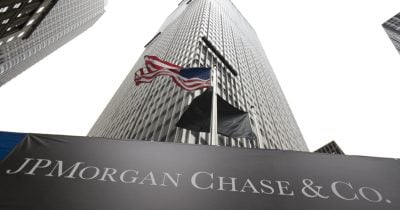In her new book, Bad Company: Private Equity and the Death of the American Dream, journalist and WIRED alum Megan Greenwell chronicles the devastating impacts of one of the most powerful yet poorly understood forces in modern American capitalism. Flush with cash, largely unregulated, and relentlessly focused on profit, private equity firms have quietly reshaped the US economy, taking over large chunks of industries ranging from health care to retail—often leaving financial ruin in their wake.
Twelve million people in the US now work for companies owned by private equity, Greenwell writes, or about 8 percent of the total employed population. Her book focuses on the stories of four of these individuals, including a Toys “R” Us supervisor who loses the best job she ever had and a Wyoming doctor who watches his rural hospital cut essential services. Their collective experiences are a damning account of how innovation is being replaced by financial engineering and the ways that shift is being paid for by everyone except those at the top.
In a review of Bad Company for Bloomberg, a longtime private equity executive accused Greenwell of seeking out sad stories with inevitably “sad endings.” But the characters Greenwell selected don’t just sit back and watch as private equity devastates their communities. The book is a portrait of not only how the American dream is being eroded but also the creative tactics people are using to fight back.
Greenwell spoke to WIRED late last month about what private equity is and isn’t, how it has transformed different industries, and what workers are doing to reclaim their power.
This interview has been edited for clarity and length.
WIRED: What is private equity? How is the business model different from, say, venture capital?
Megan Greenwell: People confuse private equity and venture capital all the time, but it’s totally reasonable that normal people don’t understand the difference. Basically, the easiest way to explain the difference is that venture capital firms invest money, usually in startups. They’re essentially taking a stake in the company and expecting some sort of returns over time. They’re also generally playing a significantly longer game than private equity.
But the way private equity works, especially with leveraged buyouts, which is what I focus on in the book, is they’re buying companies outright. In venture capital, you put your money in, you’re entrusting it to a CEO, and you probably have a board seat. But in the leveraged buyout model, the private equity firm really is the owner and controlling decider of the portfolio company.
How do private equity firms define success? What kinds of companies or businesses are attractive to them?
In venture capital, VCs are evaluating whether to make a deal based solely on whether they think that company is going to become successful. They are looking for unicorns. Is this company going to be the next Uber? Private equity is looking to make money off of companies in ways that don’t actually require the company itself to make money. That is like the biggest thing.
So it’s less of a gamble.
It is very hard for private equity firms to lose money on deals. They’re getting a 2 percent management fee, even if they’re running the company into the ground. They’re also able to pull off all these tricks, like selling off the company’s real estate and then charging the company rent on the same land it used to own. When private equity firms take out loans to buy companies, the debt from those loans is assigned not to the private equity firm but to the portfolio company.
And so what you end up getting is that private equity is really attracted to companies where you don’t have to play the long game. In fact, you don’t want to play the long game, which means that you have no interest in doing the hard, slow work of improving a company’s fundamentals. It is just not about improving the company at all. It is about, how do we extract money?
How did we get to this point where private equity is now taking over relatively large and diverse swaths of the economy, including veterinary clinics, brick-and-mortar retail stores, and all sorts of other businesses. What was the promise of this model?
Private equity started pretty small in the 1960s with what were then called “bootstrap deals,” essentially acquisitions of small, family-run companies that maybe showed promise for expansion but didn’t have the capital necessary to grow. So in some ways it was more like venture capital, although it targeted established companies and not brand-new startups. This idea of growth at all costs then just expanded and expanded and expanded and started swallowing more and more and more things.
When did private equity start to peak?
There was a huge expansion of private equity in the 2010s for the same reason that venture capital exploded: There was a lot of cheap money out there, and cheap money is great for investors. We’ve seen private equity explore more industries over time, and usually that’s because some policy change or broader economic trend all of a sudden makes a certain sector look like fertile ground for them.
What are some of the strategies that workers have used to fight back against private equity firms? Have they been successful?
What was interesting to me was not prescribing solutions but talking about what people are doing. The four characters in my book are all trying to do something about this in very different ways, and those range from fighting for regulation, to just going head-to-head directly with the private equity firm that upended their own life, to really trying to reinvent their industries from the ground up, which is something that is especially inspiring to me.
Do you have one that has stuck with you more than the others?
One example that I’ll talk about from the book is from the Toys “R” Us section. Public pension funds are a huge source of capital for private equity firms, and they typically have worker representatives on their boards. So if they’re representing teachers and nurses and firefighters, there will be one or more people working in those professions serving on the pension fund board.
Toys “R” Us workers had this very smart idea that those folks would be more likely to be sympathetic to their cause than a bunch of billionaires would. So they started going around the country, standing in front of these pension fund boards and saying “here is how these private equity firms that you invest in have blown up our lives,” talking in really specific detail about things like how they couldn’t find jobs and were worried about feeding their families. The protagonist of that section of my book tells a story about how the members of one board just started peppering her with questions after she spoke in front of them.
Some people claim that private equity firms are the primary culprit behind broad economic problems such as income inequality and the housing crisis. Are they putting the blame in the right place?
I think by putting all of the blame on them, you end up undermining the criticisms about private equity firms that are more truthful. This is something that I thought really hard about how to do in the book, because I do think it’s a mistake actually, but also strategically for people who want to see this system change, to attribute too much to them.
Right.
The first section of the book tells the story of how the four industries I write about—housing, hospitals, retail, and local media—got themselves into trouble in the first place. In all of those cases, the problems are so fundamental. And in many of those cases, the earlier business decisions were so bone-headed that they essentially opened the door and invited private equity to walk right in. I do think private equity is a villain in terms of the way they have taken advantage of these industries for their own gain, but it is absolutely true that they did not cause the problems.




